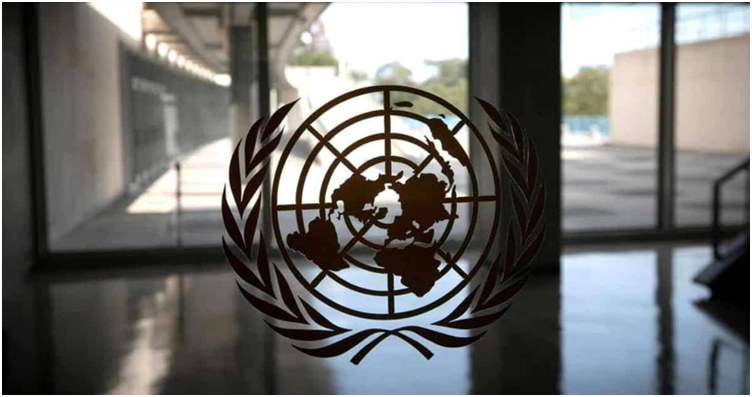UN adopts Palestinian resolution to ask ICJ opinion on Israels ‘prolonged occupation’ (GS Paper 2, International Organisation)

Why in news?
- Recently, the United Nations’ decolonisation committee adopted a Palestinian draft which sought the International Court of Justice (ICJ) to “urgently” weigh in on Israel’s “prolonged occupation” and “annexation of the Palestinian territory”.
(MSN.com)
Details:
- The resolution titled “Israeli practices and settlement activities affecting the rights of the Palestinian people and other Arabs of the occupied territories,” was one of many in the context of the Israel-Palestine conflict during the session.
- The resolution approved at the UN headquarters in New York requests the ICJ for an “advisory opinion” on what the resolution refers to as Israel’s “prolonged occupation” which it says is violating the Palestinians’ right to self-determination.
- In 1967 after the six-day war Israel captured the West Bank, Gaza and East Jerusalem, areas which Palestinians want for a state. The resolution calls for the ICJ to weigh in on the conflict in accordance with international law and the UN charter.
Nations in support:
- 98 countries supported the resolution and 17 voted against it and 52 nations had abstained from voting.
- Countries like the United States, Australia, Canada, Italy, Germany, Austria, Israel, the Czech Republic, and several Pacific Island nations had voted against the resolution. While countries including, Russia, Bahrain, Egypt, Ukraine, and United Arab Emirates had voted in favour.
Altitude decides simian attitude to diet
(GS Paper 3, Environment)
Why in news?
- Differences in altitude make a primate species in the same Himalayan habitat choose between flowers and fruits as food options beyond their staple menu of leaves, a new study has revealed.
Himalayan Gray Langur:
- The Himalayan Gray Langur or the Chamba Sacred Langur ( Semnopithecus ajax) is a colobine, meaning leaf-eating monkey.
- It is considered an endangered species globally as its population is estimated to be less than 1,500 mature individuals in 15-20 groups.
- The Himalayan Gray Langur was once considered a sub-species of the Semnopithecus entellus, commonly known as the Bengal Sacred Langur or Hanuman Langur, but it was separated as a species in 2005.

(pinterest.com)
How the study was conducted?
- Three primatologists studied the diet composition of five such groups in and around the Kalatop-Khajjiar Wildlife Sanctuary in Himachal Pradesh between September and November 2020.
- They especially concentrated on two groups, one inhabiting the Kalatop forest at an average altitude of 2,396 metres, and the other based in the Khajjiar forest at an average altitude of 2,188 metres.
- The domains of the two groups were only 208 metres apart, but the altitudinal gap made a huge difference when the monkeys took a break from feeding on the leaves of some 20 species of plants, primarily the Himalayan ivy ( Hedera nepalensis) and the Himalayan oak ( Quercus oblongata).
Recommendations:
- Apart from recommending a census for the Himalayan Gray Langur in the district, the trio of scientists advocated a further long-term study for a comparison of the diet and behaviour in the forested groups and the urbanised groups of this primate species.
- This can help formulate specific conservation action for both the groups.
Measles outbreak in Mumbai
(GS Paper 2, Health)
Why in news?
- The outbreak of measles in the country in the last few months has caused the central government to take special measures.
- Mumbai has witnessed an upsurge in cases, with the Union Ministry of Health and Family Welfare deploying a high-level multi-disciplinary team to take stock of the city.
What is Measles?
- Measles is a highly contagious disease caused by a virus in the paramyxovirus family.
- Also called rubeola, this disease is characterised by high fever and red rashes.
- The virus affects the respiratory tract first and then spreads to other parts of the body through the blood.
- It can only be prevented by vaccination and remains one of the leading causes of death worldwide.
Global Burden:
- According to the World Health Organisation (WHO), there were about 1,10,000 global deaths in 2017, most of them in children under 5.
- Cases of measles have been increasing in India. India has seen over 11,156 cases of measles till September 2022, as per WHO. The cases doubled in the first two months of 2022 compared to the previous year with a 79 per cent increase.
- Being a highly contagious disease, a person exposed to the virus has a 90 per cent chance of getting infected.

(English.jagaran.com)
What are the Symptoms of Measles?
- A person develops a high fever, which is usually the first sign of measles. It begins about 10-12 days after exposure to the virus and then lasts for 4 to 7 days.
- A person may also develop a cough, runny nose, red eyes, sore throat and white spots inside the mouth.
- Another classic sign of measles is a skin rash lasting up to 7 days. The rash commonly appears on the head and slowly spreads to other parts of the body, according to healthline.com.
- Unvaccinated children are at a high risk of measles complications, including death.
- Even pregnant women are at high risk, including people who have not been vaccinated with the MR (measles rubella) vaccine.
- Poorly nourished children are also at high risk, especially those who have a weak immune system and low vitamin A.
Vaccine against Measles:
- To eliminate measles and rubella, India launched a one-time immunisation campaign for all children between the ages of 9 months to 15 years in 2017. All states, including Maharashtra, completed the vaccination.
- Under the Universal Immunisation Programme, India administers the first dose of the measles vaccine at 9-12 months of age and the next shot at 16-24 months of age.
- In May, the government adopted a National Strategic Plan to eliminate measles by the end of 2023.
Israel harnessing DNA to enhance food supply
(GS Paper 3, Science and Tech)
Why in news?
- Israeli scientists are creating a gene bank from the seeds of local wild crops, some of which have survived for thousands of years since the birth of agriculture.
- The gene bank could help farmers deal with a harsher climate in the coming decades as they hope DNA could be key to future crops.
Why it matters?
- With the world facing extreme weather events more frequently and more intensely, the biggest threat remains to the global food supply.
- With crops yet to become climate resistant and increasing heatwaves and floods affecting yields across the world, scientists are looking back to the past to find the way for the future.
What is the purpose of creating agene bank?
- Scientists have collected seeds from a number of plants recently spotted, including a variety of water mints that will be frozen and stored at the Israel Plant Gene Bank at the Volcanic Institute. They are going through the country in search of varieties of wheat, barley, and other wild crops.
- The idea is to save their genetic makeup and study their DNA before they are lost to expanding deserts and urbanization as the climate warms.
- Scientists want to harness the resilient characteristics of these wild plants to genetically modify farmed crops so they better withstand drought or disease.

(aims.fao.org)
Fertile Crescent Region:
- Scientists have already engineered a variety of wheat with an ultra-short lifecycle, which could become an option in a hotter climate with reduced growing seasons.
- Tens of thousands of types of seeds are stored in the gene bank. It may be smaller than some collections elsewhere in the world but the gene pool here is unique, coming from an area that was part of the Fertile Crescent region known as the birthplace of crop cultivation.





